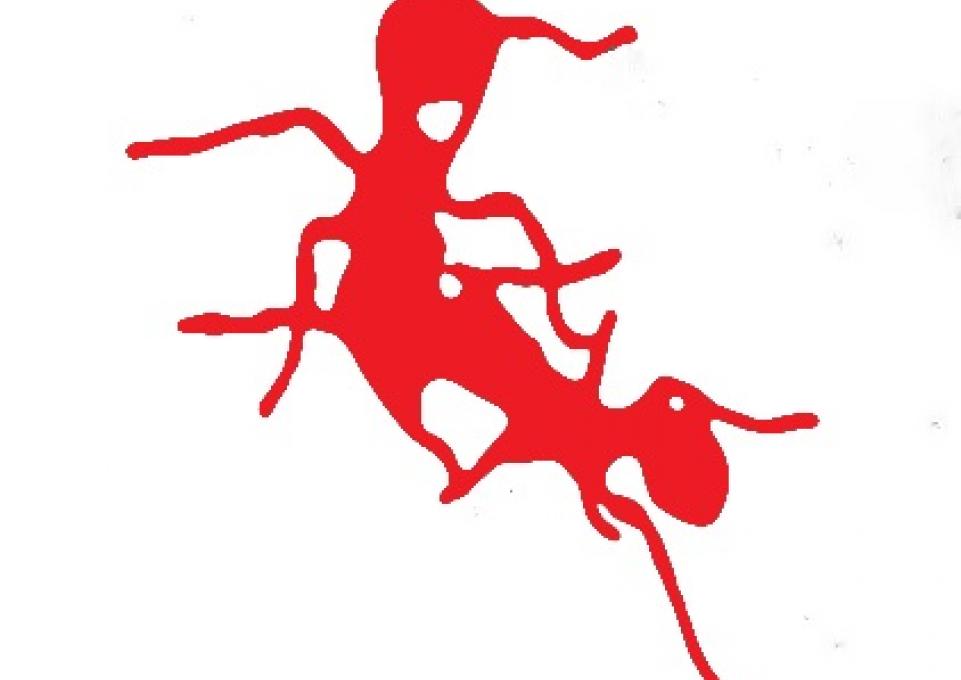
Could the behavior of an invasive species of ants explain the way humans interact?
That’s the implication of the findings a group of SUNY Buffalo State researchers has come up with, after studying the myrmica rubra species of ant.
“It’s a non-native ant from Europe that occurs at the Tifft Nature Preserve,” said Robert J. Warren, associate professor of biology. “It probably came in on ship ballasts when they were loading coal and shipping it off. It only occurs in wet coastal areas in northern climates.”
Their paper on the ants, titled “Release from intraspecific competition promotes dominance of a non-native invader,” was recently released.
The ant has a “nasty sting,” Warren said, making it a pest for the nature preserve.
“It gets in densities like you would not believe,” he said. “It hits densities where it literally—not figuratively—covers the ground.”
 Warren (pictured at left), who was interested in the ants as an ecologist, and Tifft, who wanted to get rid of the ants, formed a collaboration to study the species. The main question for Warren centered on why myrmica rubra was not coexisting with native ant species at Tifft.
Warren (pictured at left), who was interested in the ants as an ecologist, and Tifft, who wanted to get rid of the ants, formed a collaboration to study the species. The main question for Warren centered on why myrmica rubra was not coexisting with native ant species at Tifft.
“Essentially, where you have rubra, you have no native ants,” he said. “It’s a 95 percent reduction. It’s higher than you’d expect.”
Warren said he and his team went into the study assuming the non-native species wiped out the native species of ants because it was a better competitor than the natives. Tiftt is also an “altered habitat,” and it was possible that the native ants just weren’t well-adapted to the environment there.
“Neither was true,” he said. “Rubra is actually a really poor competitor, so when we put it in head-to-head fighting with the natives, it loses. It has no unique niche, and it wants pretty much the same food and shelter as the natives.”
The one unique aspect about myrmica rubra is that it does not compete with itself, Warren said.
“It has unnaturally low intra-specific competition,” he said.
With most invasive species, they arrive in a habitat with no natural enemies, and their populations explode, which is assumed to be because they are 'released' from natural enemies in the invaded range, Warren said. However, Warren's findings with rubra suggest that invasive species may thrive because they have no “friendly enemies” in the invaded range.
“The natives are fighting with themselves and rubra, where rubra is essentially competing as one,” he said. “Which means that all of Tifft and probably all of Western New York is one colony. It’s really fascinating.”
The team of researchers observed the ants in nature as well as in the lab. Warren likened the way native ants behave toward each other to Game of Thrones, the popular HBO show.
“They slaughter each other’s queens,” he said. “For ants, that’s the death of the whole colony.”
For rubra, they’re bad at fighting, as well as obtaining food, Warren said. However, not competing with each other allows their numbers to “explode.”
“Most natural populations limit themselves before they run out of food,” he said. “They get territories, and they all compete for the food. This all limits them from running out.”
Rubra eats everything, and its populations crash every summer, Warren said.
While the mechanism deals with ants in this specific case, it probably applies to other invasive species, like plants, Warren said. That hasn’t been studied just yet.
It may also explain human populations, Warren said.
“Folks like to think that we’re really mean to each other, but we actually have an unnaturally high level of cooperation, like nothing else,” he said.
For instance, if an Alaskan wolf was dropped into Siberia, the Siberian wolves would “tear it to shreds,” Warren said. Conversely, Americans can travel to Siberia and work with people there.
“We cooperate bizarrely high, and that’s probably why our population continues to grow exponentially,” he said. “Because of our cooperation.”
